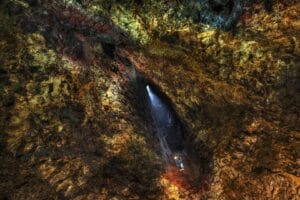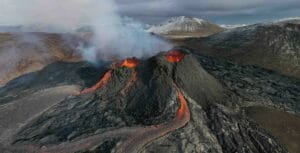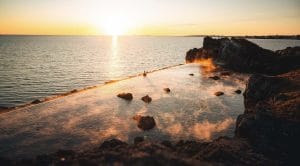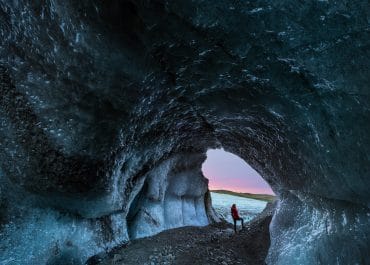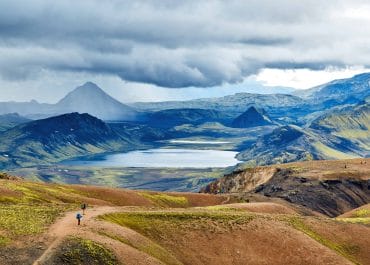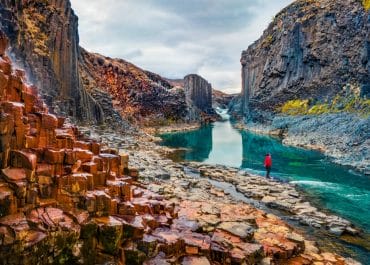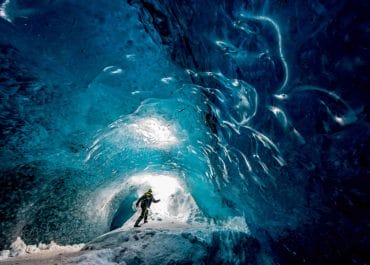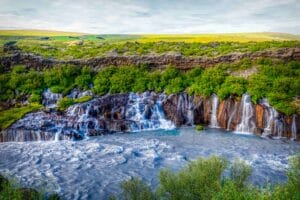Being in Iceland will have you realize two things for sure – one, it is one of the most beautiful countries out there where nature functions in its full force, and two it has one of the most glorious and interesting histories of settlement ever. While the landscape of Iceland will mostly just have you awe-inspired by the beauty that you will encounter, there is no way that you will miss out on the not-so-subtle signs that make it clear that Iceland has a very proud heritage of Viking culture. The capital city of Reykjavík and other settlements around the country are flooded with Viking figures, activities and events, museums, photo booths, and whatnot. Each one of these things serves as a constant reminder of the rich and interesting heritage that Iceland showcases. Many hotels, guesthouses, and other forms of accommodation have a figure a Viking figure as their logo. There are many fancy dress and costume shops filled with items to turn you into a strong intender in a Viking-look-alike contest. Most souvenir shops are crowded with Viking and Norse god gift items. All these and many other things represent how connected Iceland is to its history of origin.

Introduction to Vikings and Icelandic Settlement
Vikings have also known Norsemen or the Norse. They are the people who came from Scandinavia and settled across many remote parts of the world between the 8th to 11th century and Iceland is one of those areas. Initially, Vikings were raiders, who took whatever they needed or wanted from the villages that they raided. The term used for actions of Vikings is “land-taking” or landnám. Although it is said that once Vikings settled at a certain place, they would put away their weapons and indulge themselves into the profession of honest living, and such were the Vikings that came in an open ship to Iceland. Icelandic Vikings are said to be farmers and fishermen instead of scourges. Icelanders are believed to be the descendants of Norwegian Vikings who came to settle in the country around the 9th century.
The book of Icelanders “Íslendingabók” by Ari Thorgilsson or Ari the wise written in the 12th century, claims that Vikings arrived on land which was predominantly inhabited by Gaelic monks or Irish holy men. Some speculations state that these Irishmen left the island because of the harsh terrain, weather, and living condition while others claim that they left given the fact that they would have to share their living space with scavengers. Either way, there is no documented proof of the existence and establishment of an Irish colony in Iceland except for their mention in the Book of Icelanders.
On the contrary, there is plenty of proof that the people who inhabit present-day Iceland are straight descendants of Vikings. Apart from many historical documents, folklore and local legends, some very prominent DNA tests clearly show that Icelanders today have the genes from the initially known Vikings to the world but far less volatile and far more polite.
The Final Stages of Settlement
Vikings that settled in Iceland were sure quick if anything. The Book of Icelanders or Íslendingabók claims that it took Vikings only 60 years to inhibit, take, or claim all the habitable land in Iceland. The book mentions about 1500 farms, places, or settlements where about 3500 Vikings settled. The age of settlement comes to an end with the construction of the very first parliament building of Iceland – Alþingi – in 930, located in Þingvellir National Park, the only UNESCO world heritage site in the country at present. Although it is claimed that immigrants kept coming to the island throughout the whole 10th century so that the population could be sustained.
The First Settlers – Popular Theories
As mentioned before, some mentions in Íslendingabók and some carbon dating data shows that the very first settlers in Iceland were Irish Gaelic monks. Vikings arrived after them. Irish holy men skipped the island and left the island all to the Vikings to create a home for themselves.
Although, the argument of the very first ones to arrive on the island among the Vikings is still on the debating table. Some believe that it was Naddodd who set foot on the land first while other, more popular, accounts claim it to be Ingólfur Arnarson.
Naddodd
As per the date records go, Naddodd was the first man Norseman to set foot on Icelandic soil. He stayed on the island for a short while. Experiencing heavy snowfall during his stay, he named the land that he stayed on “Snæland” which translates to land of snow.
Garðar Svavarsson
Naddodd was followed by Garðar Svavarsson, a Swede, who came on the island around 860. He was the first one to experience the real Icelandic winters and stayed over for the whole season. Garðar ship was pushed along the eastern coast of the country by a storm. He traveled along the eastern coast, crossed the western coast and reached the northern part of the island, finally to settle in Húsavík, the whale watching capital of the country. Garðar was the one who confirmed Iceland as an island by completing a full-circle round around it on his ship. He left the island in the summer and never came back but left two slaves behind who settled in Náttfaravík. They did not turn out to be permanent settlers, as per Íslendingabók.
Flóki Vilgerðarson
After Naddodd, Flóki Vilgerðarson was the second Norseman to arrive in Iceland. But like his predecessor, he did not become a permanent resident on his first arrival either. The legend says that he took out three ravens and set free somewhere around Faroe island to search for a habitable place on the island. One raven came back to the same place, others flew into the air and returned to the ship and the last one flew forward. The team followed the third raven and reached Vatnsfjörður in Westfjords.
It was Floki who named this land Iceland when he saw an ice drift in the fjords. His cattle died in the harsh cold on the island which resulted in him cursing the land. Despite facing many difficulties, Floki stayed on the island for over a year and returned to his country Norway in the next summer. He came back much later when Iceland started to become a real settlement and stayed there permanently.
Ingólfur Arnarson
Now came the first permanent settler of the country who started on his journey exclusively to get to Iceland. Ingólfur and his foster brother Hjörleifur left to explore Iceland after prompting a blood feud in his home country Norway and stayed in the Westfjords. Ingólfur Arnarson arrived in Iceland in 874 and returned with his brother and his men after a few years to permanently settle down on this island. Ingólfur cast pillars overboard and decided that he would stay wherever these pillars would end up. He sent two of his slaves to look for the pillars but they found the dead body of his foster brother instead. He performed the final rites of his brother in proper Nordic fashion and then went on to slay his murders who had hidden in the Westman Islands.
Arnarhvol is where Ingólfur’s slaves found the pillars and he constructed farmstead on the land which is known as present-day Reykjavík.
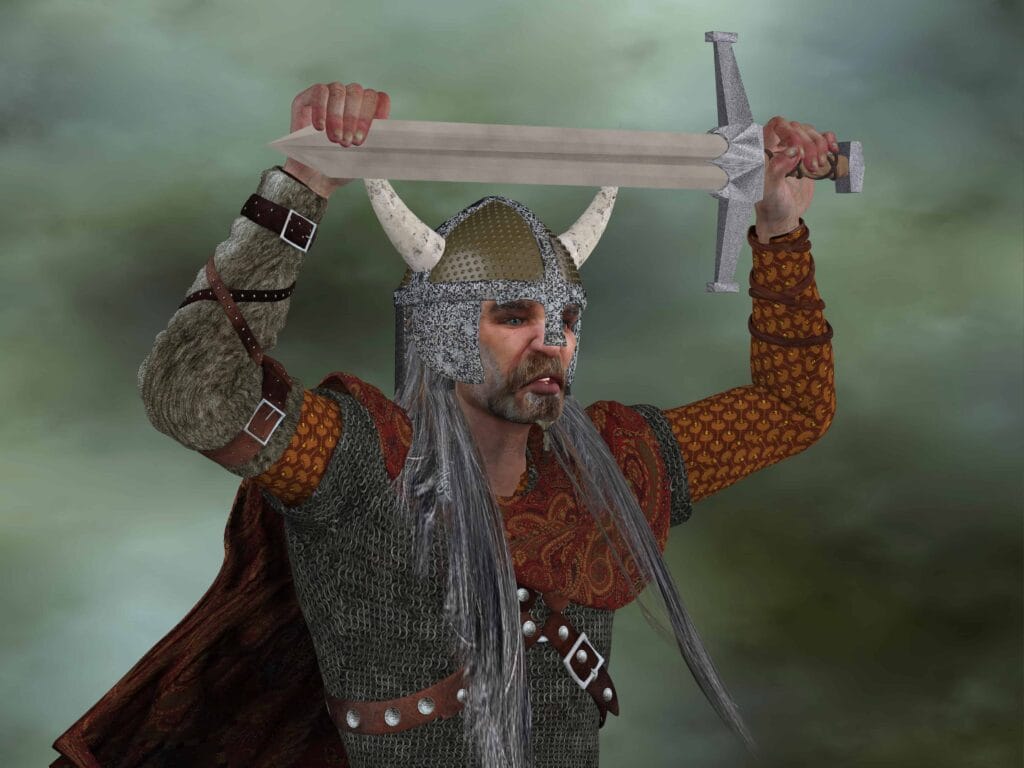
Norse Gods, Vikings and Iceland
Although modern-day Iceland is a predominantly Christian country, Norse gods were the figures of worship for Vikings. Also known as Viking Gods, the main gods were Odin, Thor, and Frey. There were some minor gods as well like Loki, the god of mischief. Anyone who is a Marvel fan today must be aware of some basic concepts about Norse gods like Thor and Odin. According to mythology, Asgard is a kingdom made of gold and silver in the sky where the Norse gods reside. Odin’s palace is the biggest out of all others and is known as Valhalla. Vikings believed that brave warriors who die in battle are taken to Odin’s palace by Valkyries – the warrior women of Asgard. Midgard or Middle Earth is inhibited by humans, elves, dwarfs, goblins, and other monsters. While humans cannot see most of these monsters, they are visible to the gods.
All Vikings gods are divided into two main branches or forms – Æsir and Vanir. Æsir gods are associated with war and victory while Vanir gods were worshiped for land, prosperity, and harvest. The following are the main gods from Norse mythology:
Odin
Also known as Allfather or Alfadir, Odin is the father and king of all Norse gods. Odin is the god of war, death, poetry, and wisdom. He watches over the 9 kingdoms from his palace in Asgard. The nine kingdoms include Asgard/Ljósálfheimar, Niðavellir/Svartálfaheimr, Midgard (Earth), Jötunheimar/Útgarður, Vanaheimar, Niflheim, Muspelheim, and Hel (Heimr). Odin symbolizes sacrifice, selflessness, and the constant thirst to acquire more knowledge. A story from Norse mythology has it that once Odin sacrificed one of his eyes to get a sip of Enchanted Water that would give him eternal wisdom and foresight.
Thor
The god of thunder with his hammer, Thor is quite a popular god as well as a figure even in the modern era. Thor was placed as the protector of humans and god which made him the most popular god among all. He is the son of Odin and he even outranked his father on popularity polls as worshiping Odin required human sacrifice. Thor is the god of Thursday and is known for his magical hammer Mjollnir and his belt Megingjörð that doubles his strength. Thorsmork Valley in the Highlands of Iceland is named after Thor.
Loki
The shapeshifting god of mischief, Loki is the adopted son of Odin. Originally, Loki is believed to be the son of two giants. He shifts his shape, plays pranks on people and some of them end up in death. Despite being one of the most cunning anti-heroes of the Norse mythology, Loki is quite famed not only among Vikings but in many religions across the globe. The most attractive, controversial, and debated attribute of Loki was his shuffle among the good and bad characters. He helps people but only after he has had his fun. If you are a marvel fan, you must know that it was Loki who set the course of destruction of Asgard with Ragnarök – a series of fated events including a huge battle that ultimately resulted in the fall of Asgard.
Baldur
One of the gods who died as a result of mischief that Loki decided to pull, Baldur was the owner of the ship Hringhorn and is the son of Odin and Frigg. Baldur himself was very gentle but was tormented by nightmares. Once Baldur dreams of his death and goes to his mother, Frigg for help. She created a spell that would protect him from everything but leaves out mistletoe from that list thinking there is no way a mistletoe would be able to hurt Baldur. Loki takes on the shape of an old woman and finds out about this one loophole. So, he converts a mistletoe leaf into a sharp piercing tipped object and gives it to one of the gods who played target practice on Baldur since he was free from the harm of any material weapon. Sadly, the mistletoe pierces his heart and Baldur dies.
Frigg
Mother and queen of gods and, Odin’s wife, Frigg is the goddess of love and marriage. Frigga is known to be very close to nature and earth but also for her temper. She once exiled Odin from their home because of a fight. But she and Odin had quite a happy marriage. Odin, as protective and keen he was about wisdom, shared many things with Frigg and gave her some of his wisdom.
Heimdall
Heimdall is another son of Odin but it is said that he had nine mother – all sisters. He was the keepers of the rainbow bridge that connected Asgard with Midgard known as Bifrost. Heimdall possesses incredible power of super hearing and sight that allows him to hear things from as far as Midgard and see for up to 100 miles.

Viking Activities in Iceland
It is true that now Vikings are only present in Iceland as a historical figure and as the descendants of the current inhabitants but they are as popular as any other historical, mythical or legendary figure in Iceland. There are several activities that you can take part in to get a closer look at the culture that Vikings practiced, themed restaurants you can visit, or hotels you can stay at for an authentic Viking vibe. The following is a curated list of activities you can do and places you can visit to get one on one with the Viking truth.
- The Annual Viking Festival: Held on the second weekend of June in the peak tourist season and right around Iceland’s national holiday, Annual Viking Festival is all you need to have a great time surrounded with food, drinks, banter, and people dressed in Viking costumes having conversations, duels and fun. There is fur, jewelry, necessities made of bones, and silver armors.
- The Viking Market: There is a beautiful Viking market in Víðistaðatún Park which sells all kinds of Viking objects, handmade leather equipment, and clothing. The market is administered by the Rimmugýgur Viking club which recently celebrated its 20th anniversary in 2017 which was filled with laughter, fake battles, food, and banter. Apart from selling beautiful Viking items, the club teaches the participants art of archery and educated people about the ways of Vikings.
- The Viking Festival Ingólfshátíð: A festival that got its name from the very first permanent settler of Iceland, Ingólfur Arnarson, the Viking Festival Ingólfshátíð was first held in the year 2013 in the capital city and has been held ever since then every year.
- Culture Night in Hljómskálagarður Park: After the annual Viking festival comes the Cultural Night on the 3rd weekend of August in the pond of Hljómskálagarður park called Tjörnin. Just like all other Viking festivals, there are Viking tools, equipment, leather accessories, and clothes, a lot of picture-perfect moments, and fun.
Places You Can Consider Visiting
- The Viking Hotel at Viking Village: The minute you see it, you will see why it is named the Viking hotel. The outside and inside both are decorated with Viking style accessories alike – a beautiful place to spend your vacation.
- The Viking Village in east Iceland: You will feel like you have entered a fantasy land in this beautiful little village.
- Fjörukráin Viking Restaurant: This small Viking theme restaurant is located in the Viking village. The staff dresses up as Viking folks and the restaurant is made inside the second oldest building in the village.
- Ingólfsskáli Longhouse: A turf house restaurant named after the first settler of Iceland this restaurant is located right off the ring road near Selfoss.
- Mink Viking Portrait: A gorgeous photo studio you can visit by Laugavegur street to get a beautiful portrait of yourself in Viking outfits.
- The National Museum of Iceland: Viking treasures, Viking swords, and everything else Viking can be found at the National Museum of Iceland.
- The Saga Museum: There is no better way to learn all about Vikings except the life-size silicone Viking figures available in the Saga Museum.
From sailing like a Viking to looking and behaving like a Viking and everything in between – there is nothing you will not find in Iceland that will be lacking the Viking vibe. Iceland is completely in touch with its heritage and history. Not only that, Viking culture may have been barbarian initially but Iceland gets the mellow fun part of it which makes the imitations and funfairs even more fun. Every history and mythology buff should visit at least a few of the places and try out some Viking activities when you are in the country, you will have the time of your life!


